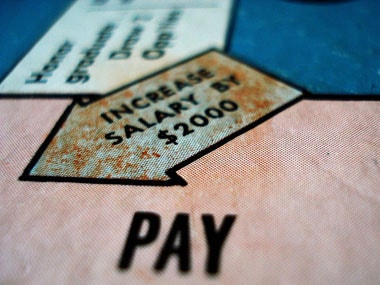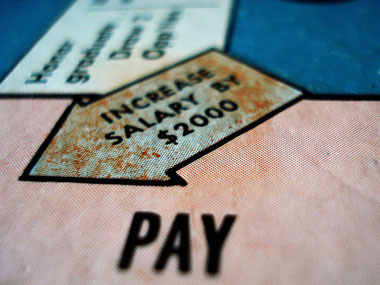Working hard to earn a salary is easier than making sense of your salary structure. More often then not, the salary promised on the paper does not match the peanuts that hit your bank account monthly and, you keep wondering, how on earth did this happen.
So if you are looking for a job or plan to approach your company’s HR department to restructure your salary, here are a few things to keep in mind, about salary structure.
[caption id=“attachment_655398” align=“alignleft” width=“380”] You will need to submit bills up to Rs 15,000 per annum, which is allowed as deduction.Flickr[/caption]
You will need to submit bills up to Rs 15,000 per annum, which is allowed as deduction.Flickr[/caption]
The number one culprit behind the huge difference between your cost to company (CTC) and take home salary is taxes that are applicable on different parts of your salary. But, you also get a deduction by various means. You can actually structure your salary in such a way that you can reduce the amount of tax you pay.
There are some allowances on which you have to pay a tax. But there are a few others on which tax is not applicable up to a certain limit. The same is the case with reimbursements. Here are a few allowances that come as part of your salary.
Medical Allowance: You will need to submit bills up to Rs 15,000 per annum, which is allowed as deduction.
Leave and Travel Allowance: Two trips in a block of 4 years are allowed and only travel within India can be claimed as deduction. Read more about this here .
Food coupons: Here you will get food coupons and this amount is not taxable.
Telephone Allowance: An amount of Rs 12,000 per annum is tax free for allowance towards phone bill. Keep in mind that you have to provide bills, to get a tax benefit.
House Rent Allowance: This can be claimed if you live in a rented place and your rent exceeds 10 percent of the salary. The actual HRA exempted from tax is either the actual amount of HRA received or 40 percent of salary (in Delhi, Mumbai, Chennai or Kolkata this is 50 percent), whichever is lower. Or, rent paid minus 10 percent of salary.
For a better insight into how to make the most of your salary, look at the following comparison between two structures for the same salary, Rs 10,16,831 per annum (assuming an investment of Rs 1 lakh for tax purposes apart from EPF amounts).
Structure 1: This structure has basic, special allowance and HRA of Rs 79,833. (See chart here )
Total tax (yearly): Rs 1,02,669
In hand salary (yearly) : Rs 8,13,327 while the monthly take home is Rs 67,777.
Taxable income is Rs 8,48,396.
Structure 2: This structure has basic, HRA, LTA, medical, other allowance and special allowances of Rs 79,833. ( See chart here )
But with this structure you get a tax benefit for LTA, medical allowance and other allowances on production of bills.
Total tax (yearly): Rs 67,391
Here the in hand salary (yearly) is Rs 8,48,605, while the monthly take home is Rs 70,716.
Taxable income is Rs 6,77,146.
The difference between take home monthly salary does not seem too much but the difference between the taxable income is huge. Of course, to get the benefits of the second structure, you will have to be disciplined enough to submit the relevant bills as well.
So, next time when you are negotiating your salary, structure it in a way which will allow you to take home the maximum that too at a lower tax. Good luck.
)